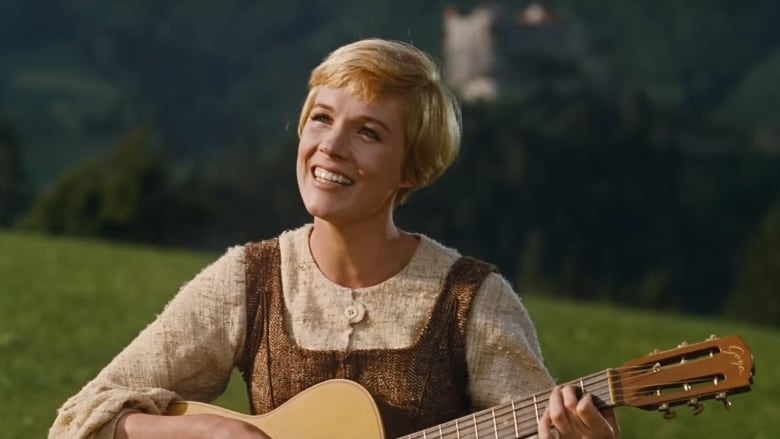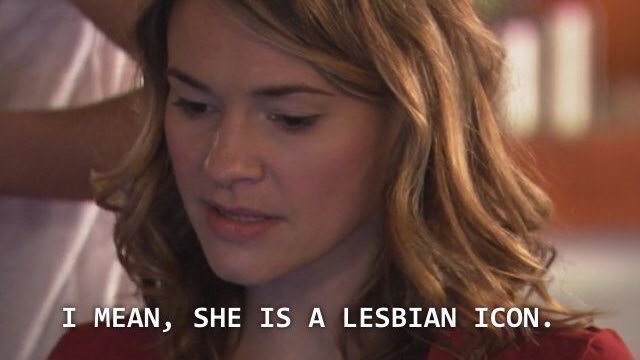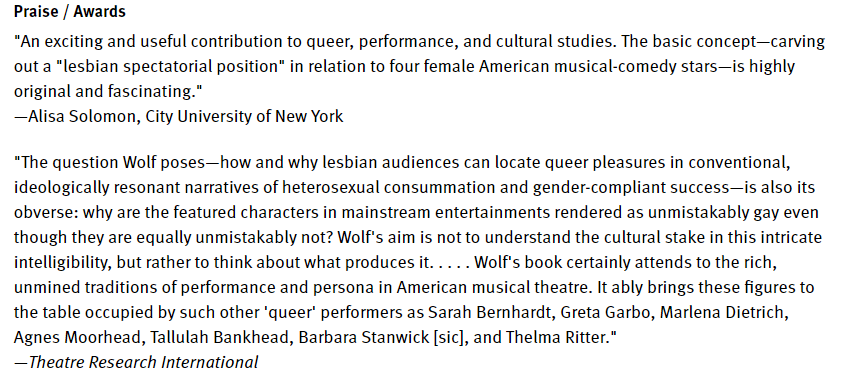The Sound of Music is & #39;a Lesbian Musical Fantasyland& #39;
— a thread on intricate rituals in the Sound of Music https://abs.twimg.com/emoji/v2/... draggable="false" alt="💫" title="Symbol für Benommenheit" aria-label="Emoji: Symbol für Benommenheit">
https://abs.twimg.com/emoji/v2/... draggable="false" alt="💫" title="Symbol für Benommenheit" aria-label="Emoji: Symbol für Benommenheit">
— a thread on intricate rituals in the Sound of Music
This thread is based on the book "A Problem Like Maria: Gender and Sexuality in the American Musical" by Stacy Wolf, an Associate Professor of Theatre at the University of Texas at Austin.
Book info: https://www.press.umich.edu/11339/problem_like_maria">https://www.press.umich.edu/11339/pro...
Book info: https://www.press.umich.edu/11339/problem_like_maria">https://www.press.umich.edu/11339/pro...
Subtext and the "Lesbian" Perspective
— Wolf isn& #39;t concerned with producer/writers& #39; intentions. Instead, she reinterprets 20th century musicals "from the lesbian and feminist perspective by design."
— Wolf isn& #39;t concerned with producer/writers& #39; intentions. Instead, she reinterprets 20th century musicals "from the lesbian and feminist perspective by design."
She notes that the lesbian perspective is not uniform and any willing spectator may interpret a work through this lens. Additionally, "terming them [characters] & #39;lesbian& #39; is a shorthand way of asserting that & #39;they can be read as lesbian.& #39;"
Lesbian viewers "are an interpretive community" and more likely to read bodies and behaviors. This "reading against the [heteronormative] grain" has long existed as a way to find representation through cultural subtext and characters experience that resemble lesbian experiences.
How "The Sound of Music" leaves room for the lesbian-feminist lens
— Most heteronormative Golden Age musicals are structured in a way that emphasizes the first act. This allows for a sustained presence of the woman& #39;s inner-life, growth, and expression through song.
— Most heteronormative Golden Age musicals are structured in a way that emphasizes the first act. This allows for a sustained presence of the woman& #39;s inner-life, growth, and expression through song.
It also de-emphasizes act 2, and thus, the heterosexual romance. The Sound of Music heightens this by introducing the nuns alongside Maria. Instead of the male love interest being the binary that contrasts the female lead in act 1, it is the "notion of proper femininity."
Maria& #39;s individual self is more central to the narrative than the romance is. We don& #39;t meet the Captain as a love interest, but as the challenger of Maria& #39;s intensity and passion. Maria& #39;s actions, desires, and love of music push other characters enough to shape the narrative.
Maria& #39;s relationships with other women (the nuns, Liesl, Elsa) hold equal narrative weight as her relationship with the Captain. The conflict isn& #39;t resolved by marriage—the resolution doesn& #39;t happen until we understand the importance of music, which Maria values and represents.
The Problem with Maria
— Maria is, according to Hammerstein& #39;s lyrics: a flibbertigibbet, a headache, an angel, and unpredictable as weather. She strays from the acceptable behaviors of heteronormative womanhood. In a culture dominated by these ideals, this is a problem
— Maria is, according to Hammerstein& #39;s lyrics: a flibbertigibbet, a headache, an angel, and unpredictable as weather. She strays from the acceptable behaviors of heteronormative womanhood. In a culture dominated by these ideals, this is a problem
The lesbian perspective of this experience tells us that "a character who ... does not do what a girl should do can invite lesbian recognitions." Traits that may lead to such a recognition include: assertiveness, outspokenness, a wild spirit, and autonomy.

 Read on Twitter
Read on Twitter " title="The Sound of Music is & #39;a Lesbian Musical Fantasyland& #39; — a thread on intricate rituals in the Sound of Music https://abs.twimg.com/emoji/v2/... draggable="false" alt="💫" title="Symbol für Benommenheit" aria-label="Emoji: Symbol für Benommenheit">">
" title="The Sound of Music is & #39;a Lesbian Musical Fantasyland& #39; — a thread on intricate rituals in the Sound of Music https://abs.twimg.com/emoji/v2/... draggable="false" alt="💫" title="Symbol für Benommenheit" aria-label="Emoji: Symbol für Benommenheit">">
 " title="The Sound of Music is & #39;a Lesbian Musical Fantasyland& #39; — a thread on intricate rituals in the Sound of Music https://abs.twimg.com/emoji/v2/... draggable="false" alt="💫" title="Symbol für Benommenheit" aria-label="Emoji: Symbol für Benommenheit">">
" title="The Sound of Music is & #39;a Lesbian Musical Fantasyland& #39; — a thread on intricate rituals in the Sound of Music https://abs.twimg.com/emoji/v2/... draggable="false" alt="💫" title="Symbol für Benommenheit" aria-label="Emoji: Symbol für Benommenheit">">




